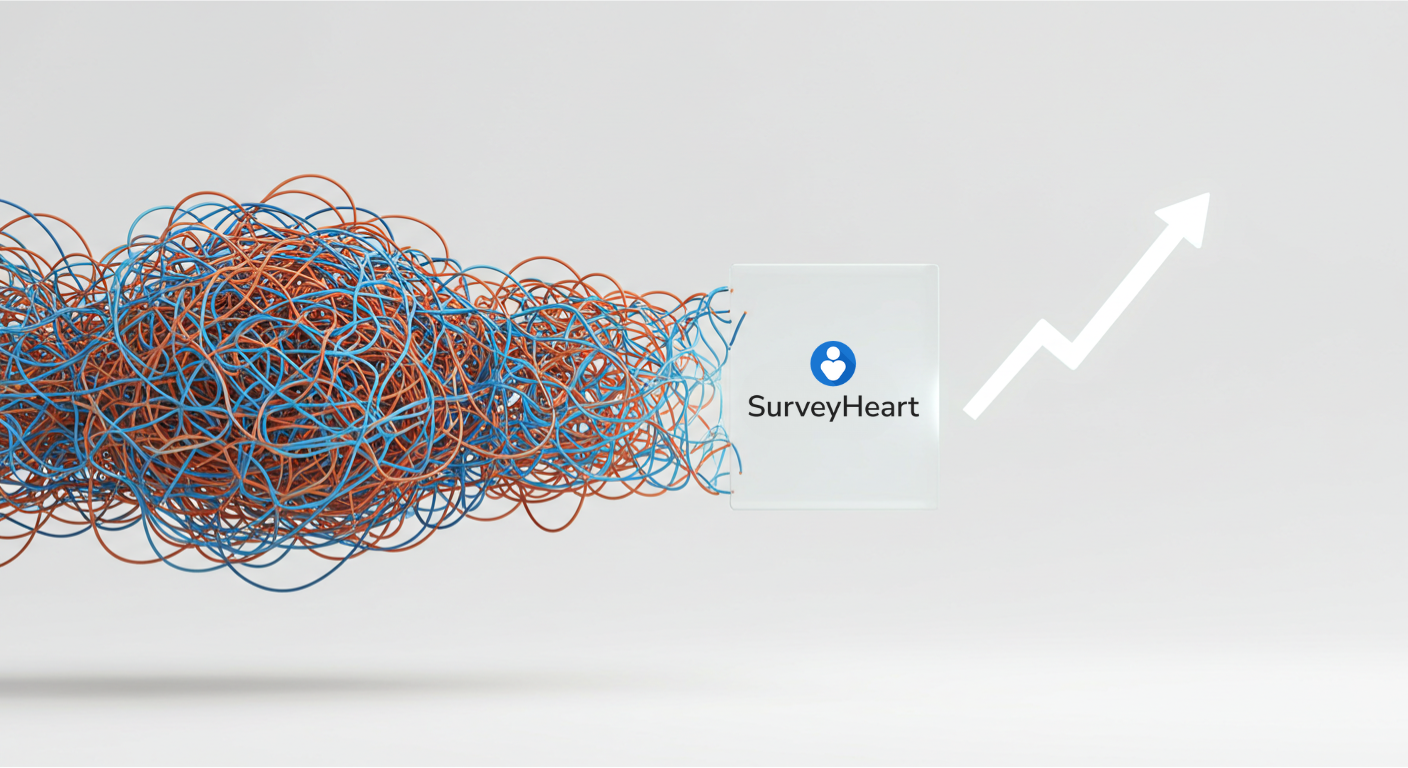
See how Amazon turns customer feedback into a growth flywheel and learn the tools, frameworks, and steps to build your own customer-obsessed engine.
Introduction: What if your customers wrote your roadmap?
Companies that lead in customer experience grow revenues 4–8% faster than the market (Bain & Company). Amazon has made that advantage a habit. Its secret isn’t magic, it’s a company-wide operating system built on customer obsession, relentless feedback loops, and disciplined execution.
In this guide, we’ll unpack how Amazon leverages customer feedback for unmatched growth and show you how to apply the same playbook to your business. You’ll learn the “Working Backwards” method, feedback flywheels, the right metrics to track, and practical steps (plus templates and tools) to implement this week.
Primary keyword: Amazon’s customer obsession
Secondary keywords: customer feedback loop, Voice of the Customer, Working Backwards, NPS, customer-centric growth, PR/FAQ, customer experience
What “Customer Obsession” Means at Amazon
“We’re not competitor obsessed, we’re customer obsessed.” — Jeff Bezos
Amazon’s first Leadership Principle is Customer Obsession. This isn’t a slogan, it’s an operating rule. Teams begin with the customer and work backwards, optimizing inputs they can control, not outcomes they can’t.
Day 1 thinking
Jeff Bezos’ annual letters describe Amazon as perpetually “Day 1.” In his words, “Customers are always beautifully dissatisfied.” That mindset fuels continuous improvement: even when a metric is green, Amazon assumes there’s a better way to serve customers.
Inputs over outputs
- Outputs: revenue, stock price, market share (lagging indicators)
- Inputs: selection breadth, price competitiveness, delivery speed, product quality, returns friction, customer support time (leading, controllable)
Amazon organizes around input metrics because inputs create the outputs.
How Amazon Leverages Feedback at Scale
Amazon treats customer feedback as a product development input, not a PR afterthought. Here’s how the system works.
The Working Backwards method (PR/FAQ)
Before writing a line of code, teams write a one-page press release and a detailed FAQ that explains the customer benefit, why it matters, and how it works. This clarifies the “why” and prevents building the wrong thing.
How to do it:
- Draft a headline that a customer would care about.
- Write a paragraph that explains the benefit in plain language.
- Add FAQs: Who is this for? What problem does it solve? What does it replace? How will success be measured? What assumptions must be true?
- Iterate until the narrative is compelling.
- Only then discuss design, tech, and resourcing.
- Test assumptions with quick experiments.
Pro tip: Share the PR/FAQ with 5–10 customers or customer-facing teammates. Ask, “What’s confusing?” and “What would make this 10x more valuable?”
The feedback flywheel
Build a closed-loop system that compounds learning:
- Collect
- In-product micro-surveys (CSAT/CES)
- Post-purchase NPS and review prompts
- Support transcripts and “reason for contact” tags
- Return reasons, browse/search logs, abandoned carts
- Synthesize
- Categorize comments using a consistent taxonomy
- Use NLP to detect themes, sentiment, and emerging issues
- Quantify volume, impact, and trend over time
- Prioritize
- Score ideas with RICE/ICE (Reach, Impact, Confidence, Effort)
- Bias toward fixes that reduce friction across many customers
- Experiment
- A/B test the highest-leverage ideas
- Measure input metrics and customer outcomes
- Ship
- Roll out improvements incrementally, validate with guardrails
- Close the loop
- “You said, we did” updates on release notes, email, or in-app
- Thank customers who reported issues (and tell them what changed)
Example: A spike in “returns due to size confusion” triggers an experiment adding fit guidance, customer photos, and a size recommender. Returns drop 12%, repeat purchases rise 4%.
Voice of the Customer (VoC) sources Amazon-scale companies use
- Product reviews and star ratings (including “most helpful” votes)
- NPS, CSAT, and CES across key journeys
- Return/refund reasons and defect rates
- Search terms with no results or poor click-through
- Customer support reasons and time-to-resolution
- Seller/partner feedback (Marketplace)
- On-site behavior: time on task, drop-offs, zero-result queries
The “Andon Cord” for quality
In Amazon call centers, agents can pull a virtual Andon Cord, pausing a problematic listing or process when defect signals spike. Stopping the line protects customer trust while root-cause analysis happens.
Playbook: Build Your Own Customer-Obsessed Feedback System
You don’t need Amazon’s scale to use Amazon’s methods. Follow this sequence.
Step 1: Define the beautifully dissatisfied customer
- Write a one-page persona focused on jobs-to-be-done and friction points.
- List the top five moments where trust is earned or lost.
Deliverable: Customer Promise statement (e.g., “Get exactly what you expect, on time, with zero hassle if anything goes wrong.”)
Step 2: Instrument feedback at every key moment
- Onboarding: 1–2 CES questions (“How easy was it to get started?”)
- Post-purchase: NPS 7–14 days later with “reason for score”
- Support: CSAT after resolution and one follow-up, “Was your issue prevented for the future?”
- Exit/Churn: “What nearly made you stay?” (open text)
- Website/app: Always-available “Give feedback” widget
Tools:
- SurveyHeart for NPS/CSAT/CES surveys, form templates, and quick polls
- Product analytics (GA4, Mixpanel) for behavioral signals
- Helpdesk tags (Zendesk, Intercom) for reason codes
Step 3: Write a PR/FAQ for your top opportunity
- Draft the press release (benefits, not features).
- Build the FAQ to pressure test assumptions.
- Validate with 5–10 target customers.
Template snippet you can copy:
Headline: Introducing [Feature] [Primary Benefit] for [Audience]
Subhead: Say goodbye to [pain]. Get [outcome] in [timeframe].
FAQ #1: What problem does this solve?
FAQ #2: Who is it for and who is it not for?
FAQ #3: How will we know it works (input metrics)?
FAQ #4: What are the riskiest assumptions and how will we test them?
Step 4: Prioritize with RICE or ICE
- RICE: Reach, Impact, Confidence, Effort
- ICE: Impact, Confidence, Ease
Score each opportunity and stack-rank. Keep a “fast lane” for defect fixes that directly reduce customer pain, even if the score is modest.
Step 5: Experiment fast, measure inputs
- A/B test copy, UI, and policy changes.
- Track leading metrics: time on task, error rate, support contacts, return rate, “Did this help?” votes.
- Set guardrails for churn, conversion, and revenue.
Step 6: Close the loop
- Publish a “You said, we did” page.
- Email customers who reported an issue with a thank-you and update.
- Train support reps to mention fixes proactively.
Pro tip: Treat feedback contributors as VIPs. Invite them to beta programs. Their advocacy is worth more than an ad budget.
Metrics Amazon Cares About (and You Should Too)
Input metrics (customer-controllable)
- Selection coverage (percent of top-demand items available)
- Price competitiveness index
- Delivery promise vs. actual, on-time percentage
- Defect/return rate and top return reasons
- Support contact rate per order/account
- First contact resolution time
- Zero-result searches and “dead-end” rates
Loyalty and growth metrics
- Repeat purchase rate and time to second purchase
- NPS by journey (not just overall)
- Retention/renewal for memberships or subscriptions
- Share of wallet in key categories
Operational leverage metrics
- Cost to serve per successful journey
- Percent of issues prevented vs. resolved
- Experiment velocity and win rate
Case Studies: Feedback Behind Amazon’s Biggest Wins
Prime: Turning shipping pain into loyalty
Early feedback showed shipping fees and slow delivery were major conversion killers. Amazon launched Prime in 2005, simple, fast, predictable shipping for a flat fee. Result: Well over 200 million Prime members globally (Amazon 2021 letter), higher purchase frequency, and a defensible moat built on trust and convenience.
Customer reviews: Trust over short-term conversion
Letting customers post honest reviews, even negative ones, was controversial. But transparency built trust, improved product quality through seller accountability, and increased long-term conversion. The reviews system itself became a feedback engine for product and policy improvements.
1-Click and frictionless checkout
Behavioral data and customer comments showed drop-offs in checkout. 1-Click simplified the flow, reduced friction, and established a new standard for e-commerce convenience.
Returnless refunds for low-cost items
Analysis showed that for inexpensive items, the cost of processing returns outweighed the value. Amazon implemented returnless refunds in many cases, removing hassle for the customer while cutting operational waste, a win-win driven by customer pain-point data.
Tools and Frameworks to Accelerate Your Feedback Engine
Tools to consider
- Surveys and forms: SurveyHeart (NPS/CSAT/CES templates, quizzes, quick polls)
- Product analytics: GA4, Mixpanel (funnel and cohort analysis)
- Text analytics: MonkeyLearn, AWS Comprehend (theme detection, sentiment)
- Experimentation: Optimizely, VWO (A/B tests, guardrails)
- Backlog/knowledge: Jira, Notion/Confluence (decision logs, taxonomy)
Working Backwards assets
- PR/FAQ template (as above)
- Feedback taxonomy: Define 8–12 themes (e.g., Price, Delivery, Quality, Clarity, Support, Returns, Trust, Performance)
- “You said, we did” page template: Date, customer quote, change shipped, impact metric
Common Pitfalls (and How to Avoid Them)
Asking for solutions instead of problems
Customers are experts in their pain, not your roadmap. Ask what’s hard, confusing, or slow, then design the solution.
Chasing vanity metrics
High average NPS hides journey hotspots. Measure by step: discovery, onboarding, checkout, post-purchase, support.
Collecting feedback without closing the loop
If customers never hear back, response rates and goodwill drop. Always acknowledge and update.
Over-surveying and under-analyzing
Keep surveys short, rotate questions, and invest in synthesis. One thoughtful survey beats five noisy ones.
FAQs
What is Amazon’s Customer Obsession principle?
It’s the commitment to start with the customer and work backwards. Teams prioritize controllable input metrics that improve selection, price, convenience, and trust, believing outputs like revenue follow from superior customer outcomes.
How does Amazon collect customer feedback?
Through product reviews, NPS/CSAT/CES surveys, support transcripts, return reasons, search/browse behavior, and seller feedback. Signals are tagged, trended, and used to inform roadmaps and experiments.
What is the Working Backwards methodology?
A narrative-first approach where teams write a press release and FAQ before building. It clarifies the customer benefit, risks, and metrics, reducing waste and increasing product-market fit.
How can small teams replicate Amazon’s feedback loops?
Instrument a few key touchpoints, categorize feedback with a simple taxonomy, prioritize with ICE/RICE, run small A/B tests, and publish “You said, we did” updates. Start small, keep the loop closed.
Which metrics indicate customer obsession is working?
Declining support contacts, fewer returns/defects, faster time-to-value, rising repeat purchases, journey-level NPS gains, and increased experiment win rates are strong leading indicators.
How often should I run NPS or CSAT surveys?
- NPS: Quarterly at most; also trigger post-experience NPS for key journeys
- CSAT/CES: After meaningful interactions (e.g., support resolution, onboarding completion)
Rotate questions and keep it brief to avoid fatigue.
External resources and sources
- Amazon 2016 Shareholder Letter (Customer obsession and “beautifully dissatisfied”) https://www.aboutamazon.com/news/company-news/2016-letter-to-shareholders
- Amazon 2021 Shareholder Letter (Prime membership scale) https://www.aboutamazon.com/news/company-news/2021-letter-to-shareholders
Conclusion: Make customer obsession your operating system
Amazon’s advantage isn’t luck, it’s a repeatable system:
- Start with the customer’s problem (PR/FAQ).
- Build tight feedback loops across every key journey.
- Prioritize inputs you can control.
- Experiment fast, measure what matters, and close the loop.
Adopt these habits and you’ll earn trust, reduce friction, and unlock compounding growth.
Ready to put this into action? Start by instrumenting one journey this week, share your PR/FAQ draft with customers, and publish your first “You said, we did.”
Have questions or a story about customer obsession in your team? Drop a comment below, let’s learn from each other. If this was useful, share it with a teammate who owns CX or product.
Try SurveyHeart for frictionless feedback

If you want a quick, no-code way to collect and act on feedback, give SurveyHeart a spin. Create NPS, CSAT, and CES surveys, launch forms and quizzes in minutes, and turn responses into decisions without the busywork. It’s free to start: https://surveyheart.com
